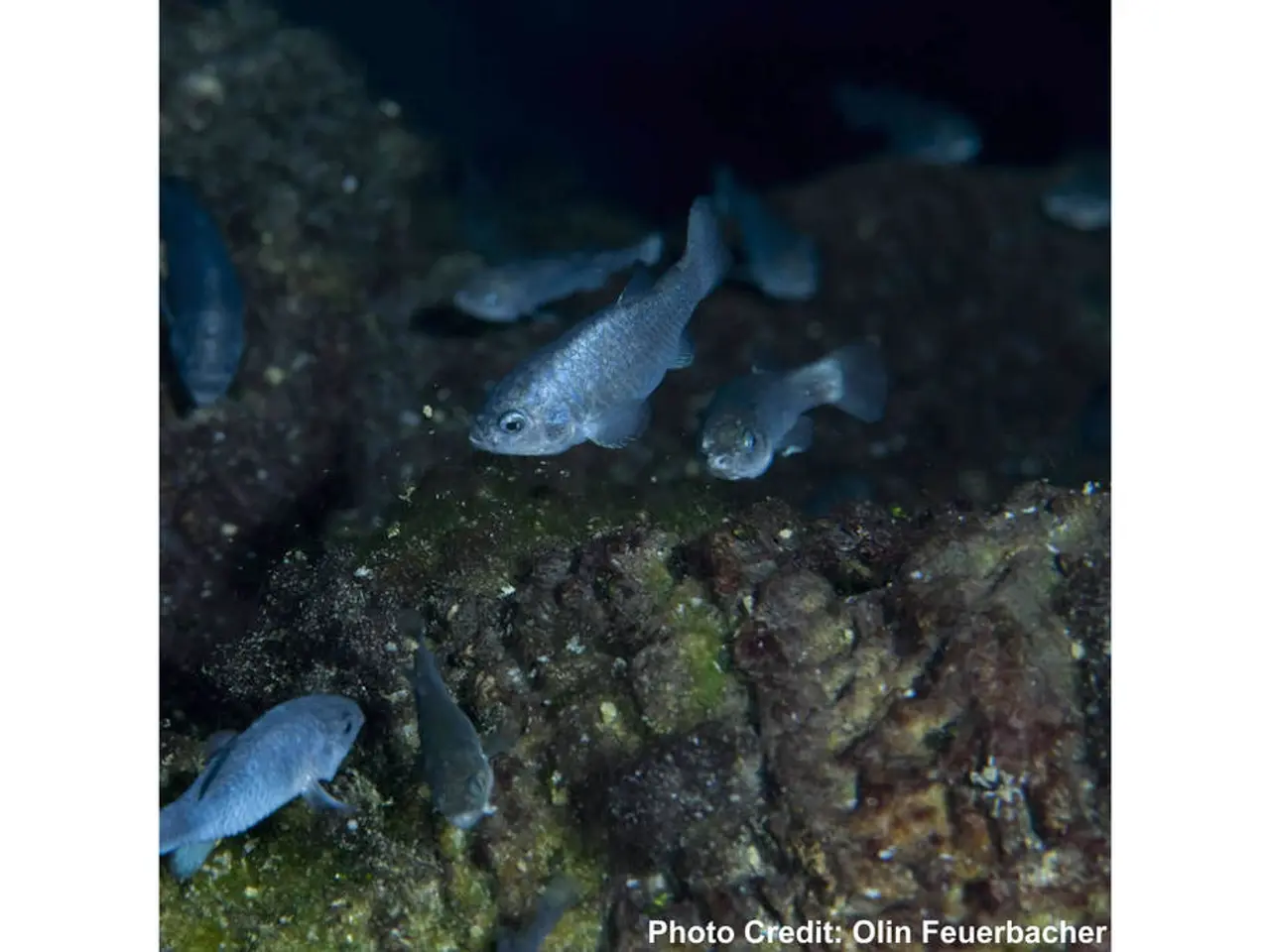Berkeley Paleontologist Rewrites Otophysan Fish Origin Story
A University of California, Berkeley, paleontologist, Dr. Juan Liu, has revised the origin story of otophysan fish, known for their specialized hearing system. These fish, which include two-thirds of all freshwater species today, likely first evolved this system around 154 million years ago, not 180 million years ago as previously thought.
Liu's research, published in the journal Science, suggests that the most recent common ancestor of otophysan fish was a marine lineage. After it split up, there were at least two incursions into fresh water. During this transition, fish developed precursor bones for enhanced hearing while still in the ocean, and fully functional hearing after moving into fresh water.
Liu and her colleagues discovered a 67 million-year-old fossil fish, Acronichthys maccagnoi, which provides crucial evidence for this evolutionary pathway. This fish had a Weberian apparatus with hearing sensitivity close to that of modern zebrafish. The Weberian apparatus, a sophisticated hearing system, now found in over 10,000 freshwater fish species, evolved to detect higher frequencies in fresh water environments.
Liu's findings challenge the previous belief that otophysan fish moved into fresh water 180 million years ago. Instead, they suggest a more complex evolutionary journey, with repeated incursions into new habitats and innovative adaptations. The discovery of Acronichthys maccagnoi offers valuable insights into this process, showing that these fish developed enhanced hearing abilities both before and after moving into fresh water.





